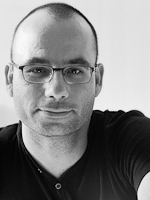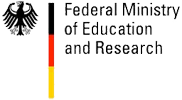| Foto | First Name | Last Name | Position |
|---|---|---|---|
 |
Christian | Theobalt | Graphics, Vision, Video |
 |
Thorsten | Thormählen | Image-based 3D Scene Analysis |
 |
Peter | Vajda | Personalized TeleVision News |
 |
Michael | Wand | Statistical Geometry Processing |
 |
Tino | Weinkauf | Feature-Based Data Analysis for Computer Graphics and Visualization |
 |
Martin | Wicke | |
 |
Martin | Wicke | Methods for Large-Scale Physical Modeling and Animation |
 |
Thomas | Wiegand | Image Processing |
 |
Stefanie | Wuhrer | Non-Rigid Shape Analysis |
 |
Michael | Zollhöfer | Visual Computing, Deep Learning and Optimization |
Researcher
 |
Dr. Michael Zollhöfer |
Visual Computing, Deep Learning and Optimization
| Name of Research Group: | Visual Computing, Deep Learning and Optimization |
| Homepage Research Group: | web.stanford.edu/~zollhoef |
| Personal Homepage: | zollhoefer.com |
| Mentor Saarbrücken: | Hans-Peter Seidel |
| Mentor Stanford: | Pat Hanrahan |
| Research Mission: | The primary focus of my research is to teach computers to reconstruct and analyze our world at frame rate based on visual input. The extracted knowledge is the foundation for a broad range of applications not only in visual effects, computer animation, autonomous driving and man-machine interaction, but is also essential in other related fields such as medicine and biomechanics. Especially, with the increasing popularity of virtual, augmented and mixed reality, there comes a rising demand for real-time low latency solutions to the underlying core problems. My research tackles these challenges based on novel mathematical models and algorithms that enable computers to first reconstruct and subsequently analyze our world. The main focus is on fast and robust algorithms that approach the underlying reconstruction and machine learning problems for static as well as dynamic scenes. To this end, I develop key technology to invert the image formation models of computer graphics based on data-parallel optimization and state-of-the-art deep learning techniques. The extraction of 3D and 4D information from visual data is highly challenging and under-constraint, since image formation convolves multiple physical dimensions into flat color measurements. 3D and 4D reconstruction at real-time rates poses additional challenges, since it involves the solution of unique challenges at the intersection of multiple important research fields, namely computer graphics, computer vision, machine learning, optimization, and high-performance computing. However, a solution to these problems provides strong cues for the extraction of higher-order semantic knowledge. It is incredibly important to solve the underlying core problems, since this will have high impact in multiple important research fields and provide key technological insights that have the potential to transform the visual computing industry. In summer 2019 Michael Zollhöfer joined Facebook. |
Researcher
- Name of Researcher
- Tobias Ritschel
- Homepage of Research Group
- First Name
- Tobias
- Last Name
- Ritschel
- Foto

- Homepage
- www.homepages.ucl.ac.uk/~ucactri/
- Phone
- Position
- Rendering and GPUs
- Mentor in Saarbruecken
- Hans-Peter Seidel
- Mentor in Stanford
- Categories
- Former Groups
- Research Mission
- Efficient realistic image synthesis is important for a number of applications, ranging from feature film production over computer games to everyday applications like geo-visualization. We seek to synthesize high-fidelity imagery as currently found in movie productions that take considerable effort and time to produce using common graphics hardware found on everyday devices of varying capabilities. To this end, we are committed to devise new rendering techniques, which blend the traditional distinction between offline and interactive image synthesis. Our particular interest here is efficient global illumination, its approximate solution and the exploitation of modern, massively parallel graphics hardware (GPU). Global illumination generalizes the commonly made assumption of point lights directly illuminating a scene to more complex light transport involving multiple reflections. The challenge of simulating indirect light involving complex dynamic geometry and complex dynamic materials is still an open problem and we try to make the right approximations that will allow attacking the problem using modern massively parallel architectures, such as GPUs. Further, the two interfaces of rendering - artists that provide media and humans consuming them - are included in our research. We support artists in their challenge to achieve a certain goal, both by providing new tools for effective artistic manipulation on "their side" of the interface, or by re-thinking how rendering should be done "on our side" (Non-photorealistic rendering). Considering human perception in the design of algorithms can improve both the user experience on "his" side of the interface, as well as efficiency of algorithms on "our" side by making perceptually valid approximations. Tobias Ritschel joined University College of Londen in fall 2015.
- mission_rtf
- Name of Research Group
- Rendering and GPUs
Personal Info
- Photo

- Website, Blog or Social Media Link



